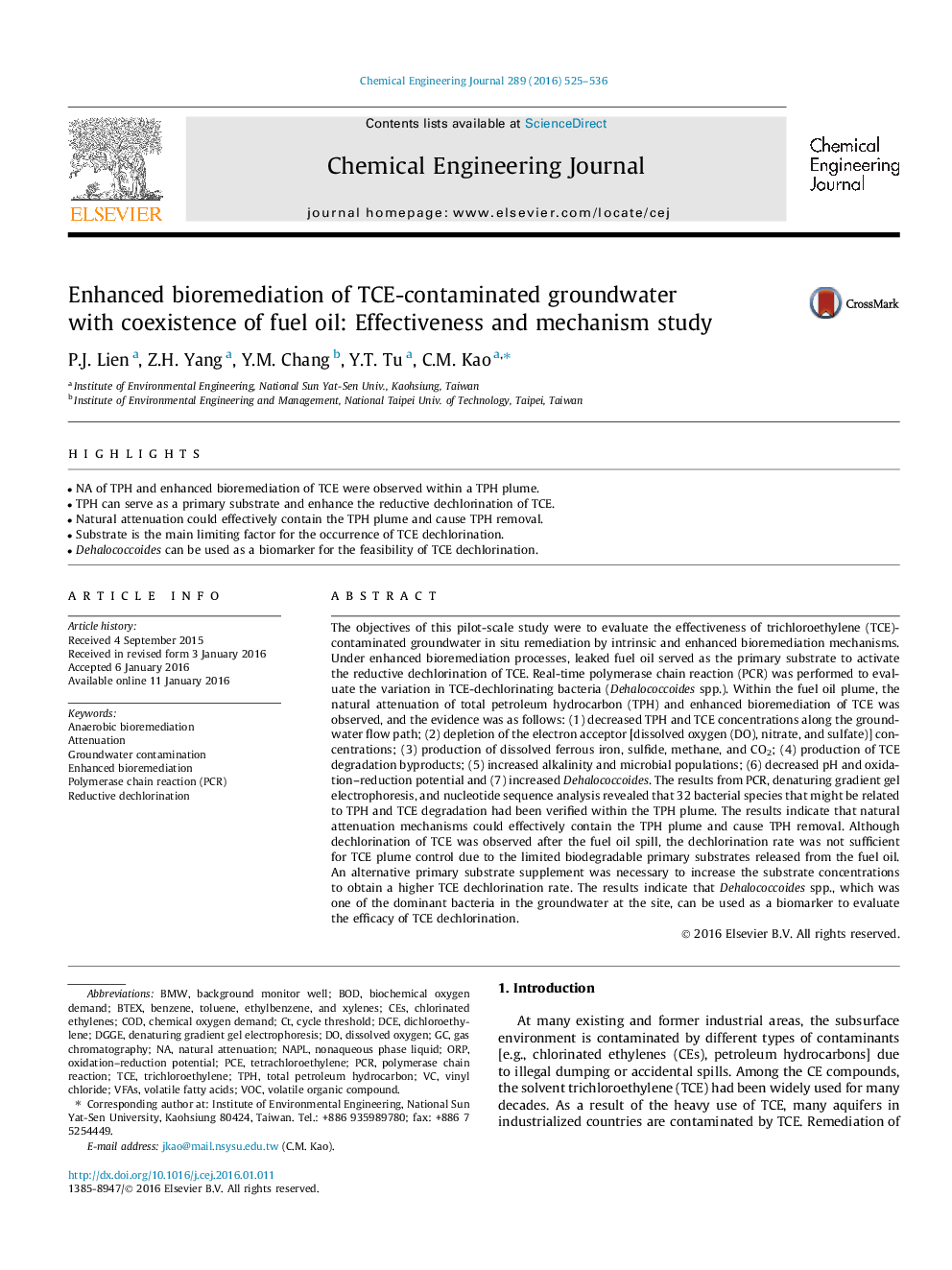| Article ID | Journal | Published Year | Pages | File Type |
|---|---|---|---|---|
| 145839 | Chemical Engineering Journal | 2016 | 12 Pages |
•NA of TPH and enhanced bioremediation of TCE were observed within a TPH plume.•TPH can serve as a primary substrate and enhance the reductive dechlorination of TCE.•Natural attenuation could effectively contain the TPH plume and cause TPH removal.•Substrate is the main limiting factor for the occurrence of TCE dechlorination.•Dehalococcoides can be used as a biomarker for the feasibility of TCE dechlorination.
The objectives of this pilot-scale study were to evaluate the effectiveness of trichloroethylene (TCE)-contaminated groundwater in situ remediation by intrinsic and enhanced bioremediation mechanisms. Under enhanced bioremediation processes, leaked fuel oil served as the primary substrate to activate the reductive dechlorination of TCE. Real-time polymerase chain reaction (PCR) was performed to evaluate the variation in TCE-dechlorinating bacteria (Dehalococcoides spp.). Within the fuel oil plume, the natural attenuation of total petroleum hydrocarbon (TPH) and enhanced bioremediation of TCE was observed, and the evidence was as follows: (1) decreased TPH and TCE concentrations along the groundwater flow path; (2) depletion of the electron acceptor [dissolved oxygen (DO), nitrate, and sulfate)] concentrations; (3) production of dissolved ferrous iron, sulfide, methane, and CO2; (4) production of TCE degradation byproducts; (5) increased alkalinity and microbial populations; (6) decreased pH and oxidation–reduction potential and (7) increased Dehalococcoides. The results from PCR, denaturing gradient gel electrophoresis, and nucleotide sequence analysis revealed that 32 bacterial species that might be related to TPH and TCE degradation had been verified within the TPH plume. The results indicate that natural attenuation mechanisms could effectively contain the TPH plume and cause TPH removal. Although dechlorination of TCE was observed after the fuel oil spill, the dechlorination rate was not sufficient for TCE plume control due to the limited biodegradable primary substrates released from the fuel oil. An alternative primary substrate supplement was necessary to increase the substrate concentrations to obtain a higher TCE dechlorination rate. The results indicate that Dehalococcoides spp., which was one of the dominant bacteria in the groundwater at the site, can be used as a biomarker to evaluate the efficacy of TCE dechlorination.
